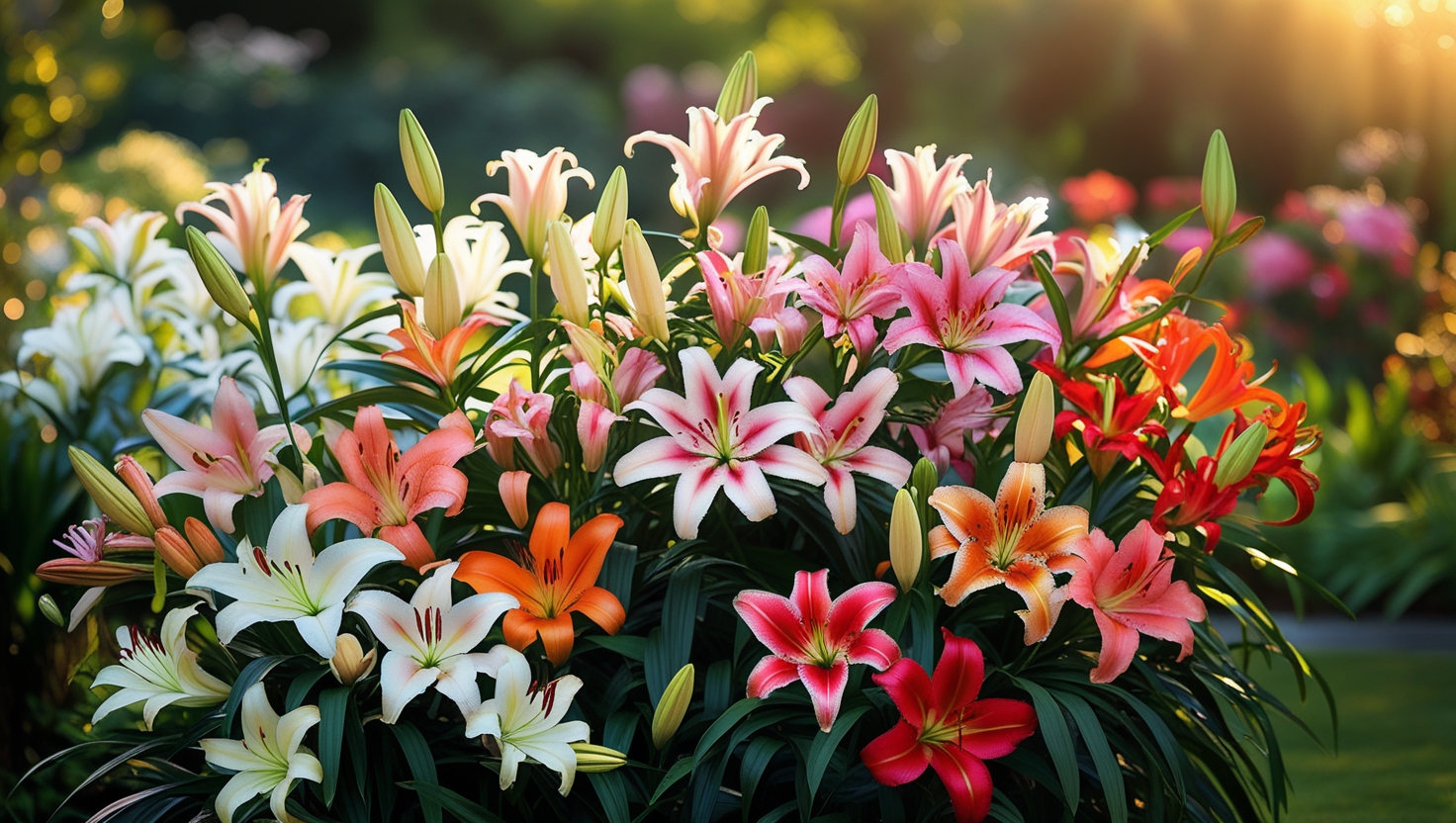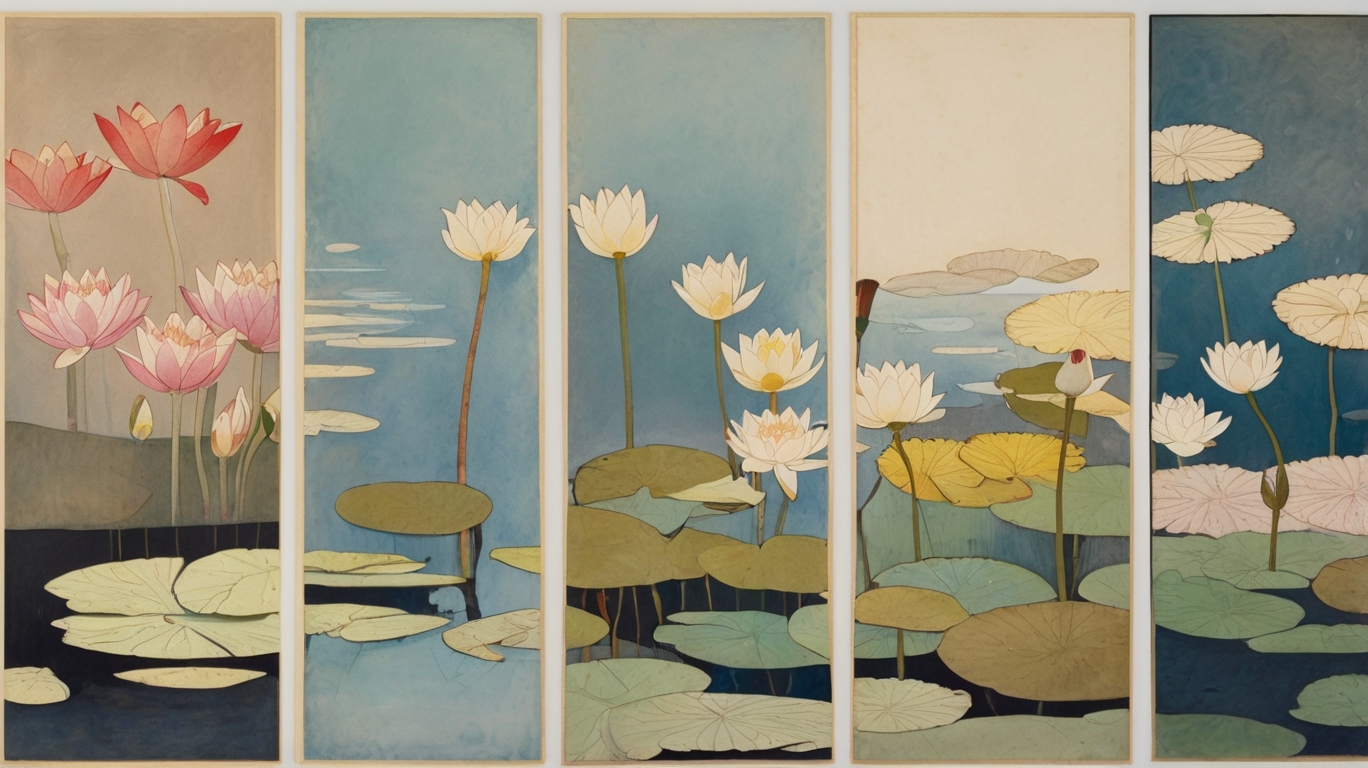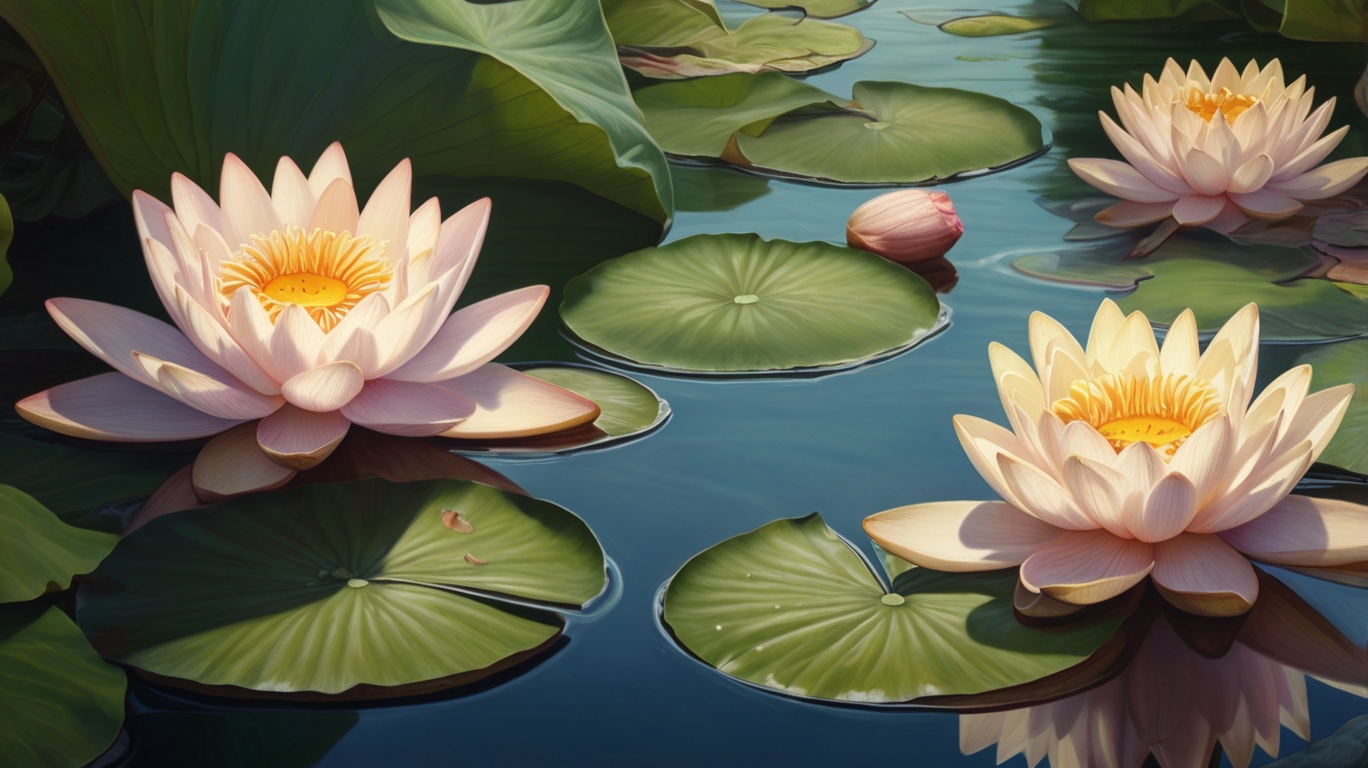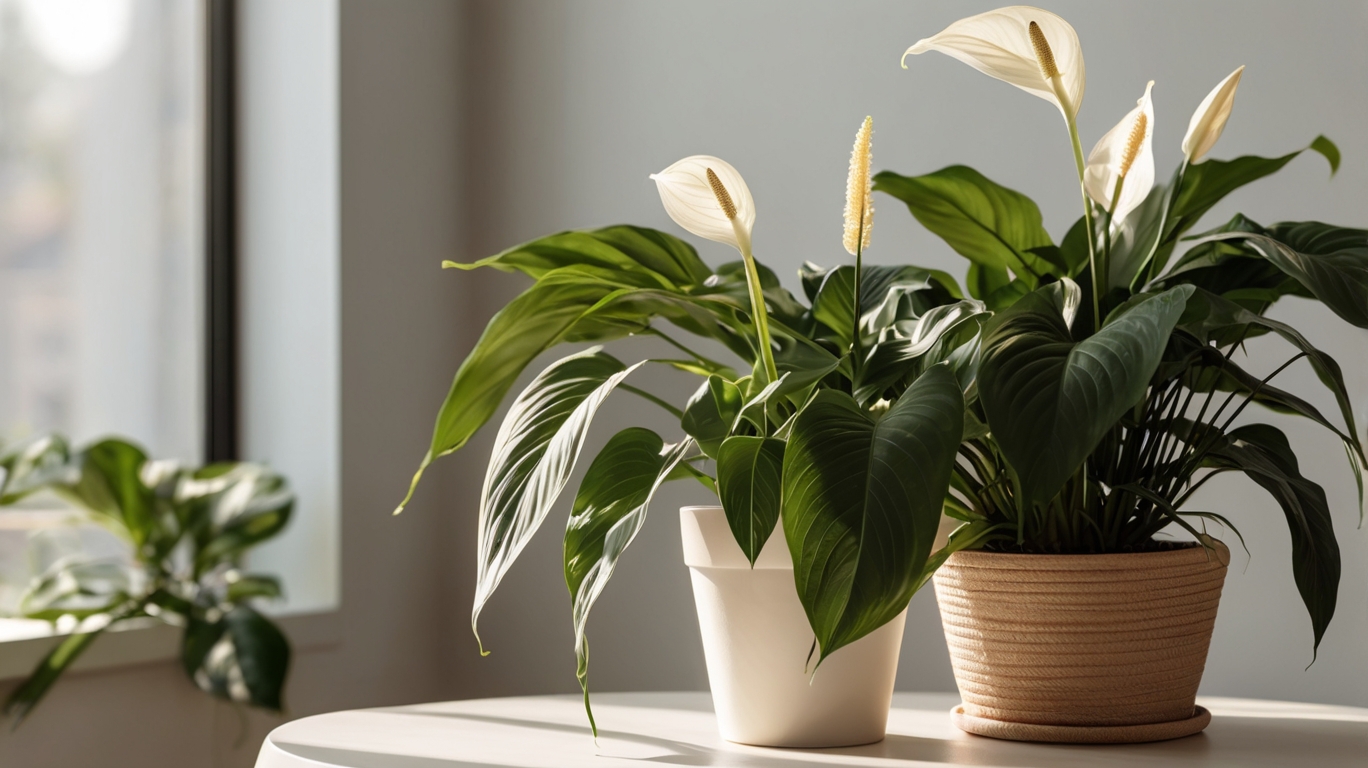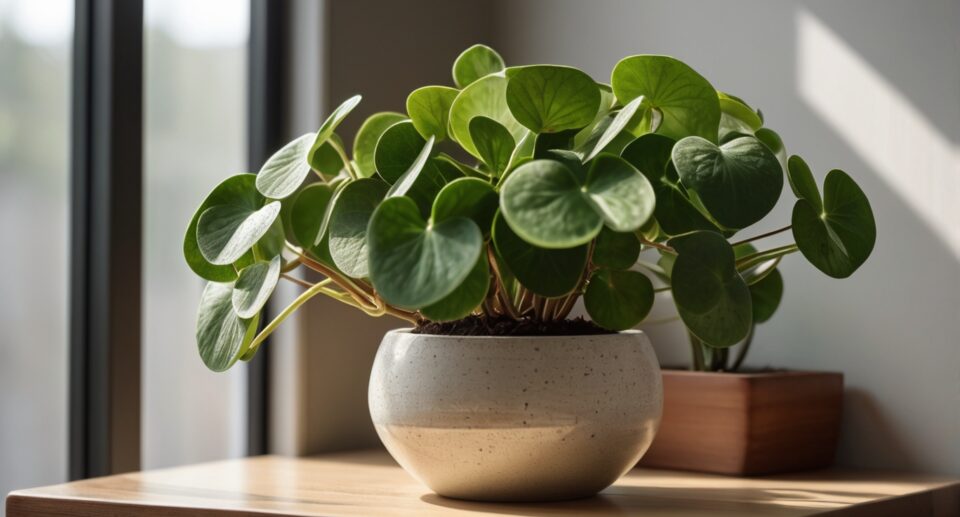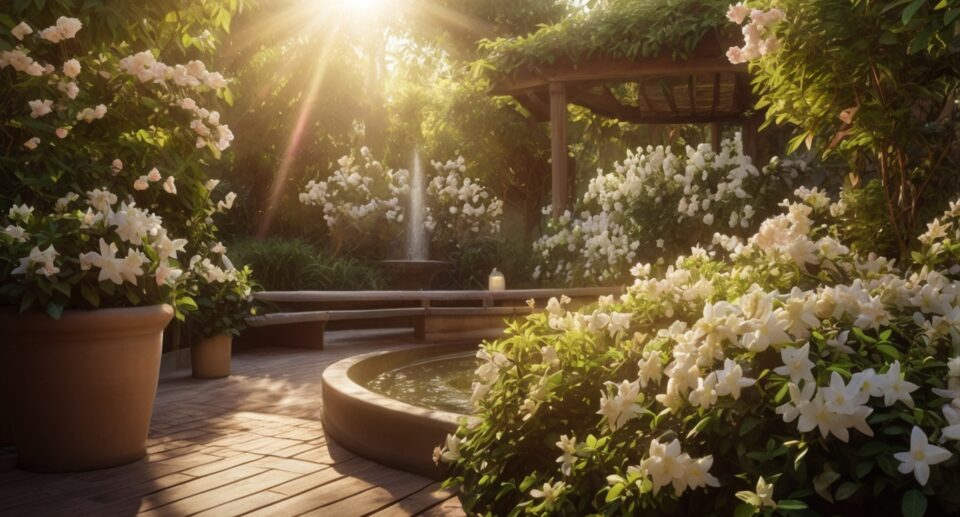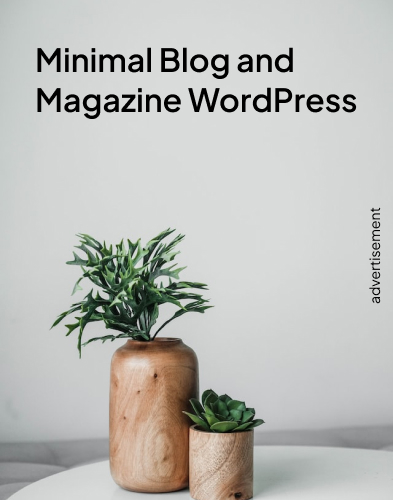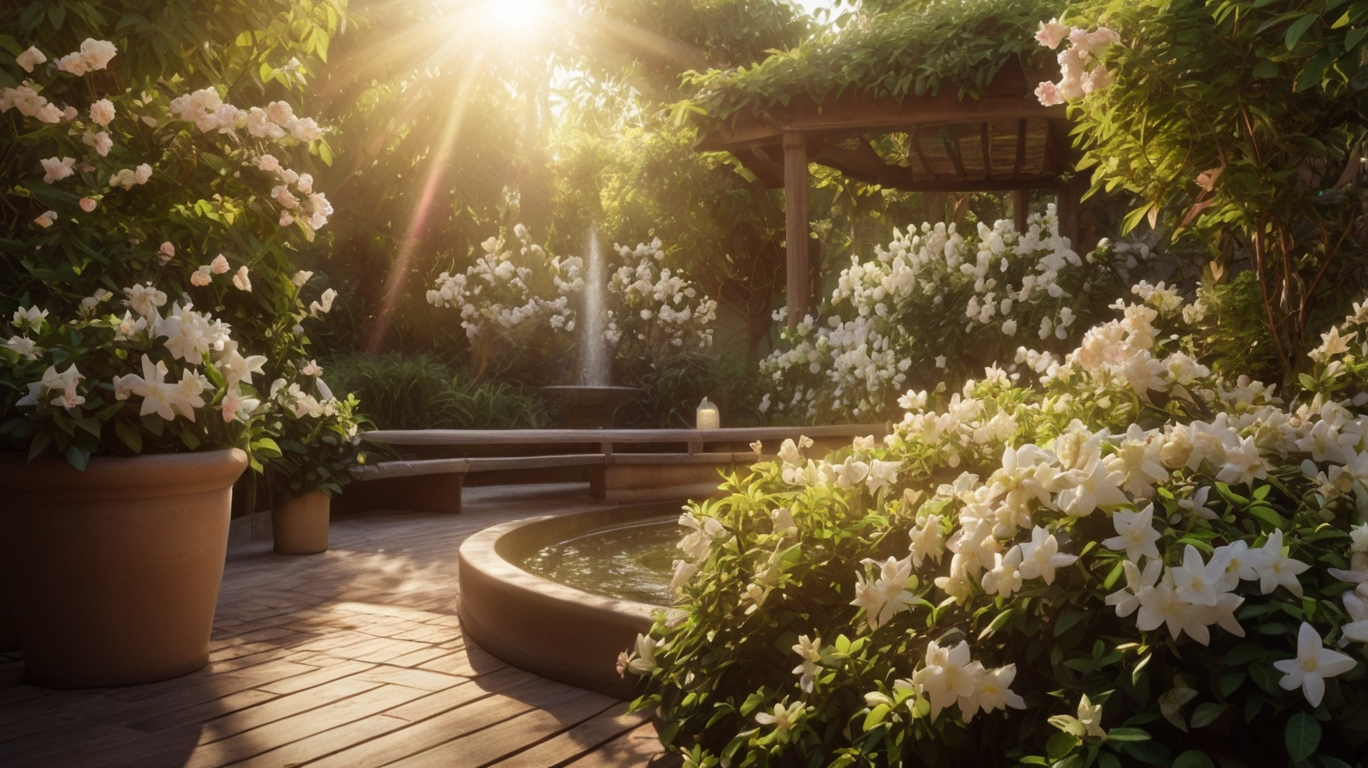What Does Jasmine Flower Smell Like? #1 Surprising Facts You Need you need to know

Introduction to Jasmine: A Flower of Romance and Elegance
Jasmine, renowned for its delicate beauty and intoxicating fragrance, is a flowering plant that has captured the attention of botanists, perfumers, and romantics alike throughout history. Belonging to the Oleaceae family, it finds itself at the heart of cultures across the globe, often symbolizing grace, affection, and purity. The flower, typically white or pale yellow, exudes an aroma that is both enchanting and deeply evocative, making it a favorite choice in gardens, essential oils, and fine perfumes.
Native to tropical and subtropical regions, jasmine thrives in warm climates, particularly in South Asia, Arabia, and the Mediterranean. These regions have cultivated jasmine for centuries, not only for its aesthetic appeal but also for its cultural significance. In Hindu and Buddhist traditions, it is seen as an offering of devotion, while in the Middle East, its fragrance adorns celebrations of love and matrimonial bliss. Its enduring presence in folklore and religious ceremonies highlights its mystique, solidifying its reputation as a universal emblem of romance.
What sets it apart is its highly aromatic oil. It is rich in compounds such as benzyl acetate, indole, and linalool, which are responsible for its sweet yet complex scent. This aroma, often described as floral, fruity, and slightly musky, has a unique ability to evoke emotions and create a soothing atmosphere. Because of this, it’s essential oil is frequently used in aromatherapy to promote relaxation and emotional well-being.
In addition to its captivating fragrance, it is celebrated for its cultural and economic significance. It serves as the cornerstone of perfumery, contributing to the creation of countless luxury fragrances. Furthermore, its use in traditional medicine—from soothing anxiety to promoting restful sleep—demonstrates its versatility. These qualities make jasmine not just a flower but a symbol of elegance and life itself.

The Origins and History of Jasmine’s Fragrance
Jasmine flowers have captivated human senses for centuries with their enchanting fragrance. Native to the tropical and subtropical regions of Asia, Africa, and Australia, it holds a prominent cultural and historical significance that transcends geographical boundaries. The flower’s name is derived from the Persian word “yasmin,” which means “gift from God” — a fitting tribute to its divine scent and beauty.
The cultivation of jasmine dates back to ancient civilizations, with evidence suggesting its use in regions such as Persia, India, and China. In these cultures, it was highly valued not only for its aromatic properties but also for its therapeutic benefits. It featured in traditional medicine, religious ceremonies, and ornamental gardens. By the 16th century, it made its way to Europe, primarily through trade routes established during the Age of Exploration. The flower quickly gained popularity among nobility and royalty, becoming a symbol of sophistication and elegance.
In ancient India, it was revered as a sacred flower, often associated with love and spirituality. Traditional Indian medicine practices, such as Ayurveda, recognized it’s ability to balance the mind and body, attributing calming and soothing qualities to its scent. Similarly, jasmine oil, extracted from its delicate white petals, became a prized commodity for perfumes and aromatherapy, marking its entry into global fragrance markets.
The historical journey of it’s fragrance is also intertwined with art and literature. In classical Chinese poetry, the flower is lauded for its purity and serene presence, while in European Renaissance art, it was depicted as a motif symbolizing grace. Today, it continues to be celebrated worldwide for its unique, sweet, and heady aroma, remaining emblematic of luxury and refinement amidst its humble roots.
A Look Inside: What Does Jasmine Flower Smell Like?
The jasmine flower’s scent is celebrated worldwide for its captivating and exotic fragrance. This delicate floral aroma is often described as both sweet and intoxicating, making it one of the most sought-after scents in perfumes, essential oils, and aromatherapy products. The flower’s fragrance is complex, combining various notes that evoke feelings of romance, warmth, and sensuality.
Jasmine’s scent begins with a rich sweetness that is neither overly sugary nor cloying. It carries a subtle fruity undertone, reminiscent of ripe banana or apricot, which adds depth to its overall profile. This fruity nuance blends seamlessly with a creamy finish, creating a luxurious softness that is both comforting and alluring.
The floral aspect of jasmine’s scent is distinct and profound. Unlike lighter floral scents like lavender or rose, it offers a stronger and more heady fragrance that makes its presence known. It borders on the musky side of florals, giving it an almost opulent and bold character.
Another defining quality is the sensuality of jasmine’s aroma. It is warm and inviting, with hints of earthiness that balance its sweetness. The scent also has a unique ability to mimic the warmth of human skin, lending it an intimate and personal feel, which is why it’s often considered one of the most romantic fragrances.
The experience of it does not remain entirely static. Its scent can evolve as the flower blooms, becoming richer and bolder during the evening hours. This nocturnal behavior, known as “evening bloom,” is tied to the flower’s production of indole—a compound that imparts a slightly spicy and animalic quality to its fragrance.
Whether preserved in essential oils or enjoyed fresh in a garden, the jasmine flower offers a multisensory experience that transcends mere floral sweetness, making it a timeless aromatic treasure.
Chemical Compounds Behind Jasmine’s Distinct Aroma
The signature aroma of jasmine flowers arises from a complex combination of chemical compounds. These compounds are predominantly volatile organic molecules that interact with human olfactory receptors, creating the iconic fragrance that is both sweet and captivating. Among the most significant contributors to it’s scent are benzyl acetate, indole, and linalool, each offering unique olfactory properties.
Key Chemical Compounds
- Benzyl Acetate One of the primary components of it’s essential oil, benzyl acetate embodies a fruity and floral aroma, lending the flower its characteristic sweetness. This compound is often utilized in perfumery as a leading note due to its alluring properties.
- Indole Indole is a nitrogen-based compound that imparts an earthy element to it’s fragrance. Though present in small quantities, it significantly intensifies the depth and complexity of the scent. Interestingly, in high concentrations, indole is associated with a slightly musky or animalistic smell, but when balanced within jasmine, it harmonizes beautifully with the flower’s floral character.
- Linalool Known for its fresh, floral, and slightly spicy aroma, linalool contributes to jasmine’s relaxing and therapeutic effects. This compound is widely recognized for its presence in numerous botanical essential oils, but its role in jasmine is pivotal in shaping the flower’s soothing scent.
- Jasmone Another key molecule, jasmone gets its name directly from it and is characterized by a warm, rich, and slightly fruity profile. It enhances the floral quality, making jasmine’s aromatic experience both sophisticated and memorable.
Supporting Compounds
In addition to the major contributors, several supporting compounds such as methyl anthranilate, cis-jasmone, and hexyl acetate also play vital roles in creating it’s multi-dimensional fragrance profile.
These chemical interactions explain why it’s aroma is often described as intoxicating, romantic, and calming. The combination of floral, fruity, and earthy notes results in a scent that is both delicate and heady.
By understanding the precise chemical dynamics behind it’s fragrance, one gains an appreciation for the blend of natural artistry at work within this flower.
Types of Jasmine Flowers and Their Unique Scents
Jasmine flowers come in a variety of species, each with unique characteristics that influence their distinct scents. While most types of it are known for their heady, sweet fragrance, subtle differences set them apart. The following highlights some of the most notable it varieties and their signature aromas.
Common Jasmine (Jasminum officinale)
Often referred to as “true jasmine,” this variety is celebrated for its intense, sweet perfume. Common jasmine blooms produce delicate white flowers that emit a fragrant aroma frequently used in perfumes and essential oils. Its scent is often described as floral and dreamy, with fruity undertones.
Arabian Jasmine (Jasminum sambac)
Arabian jasmine is widely revered for its rich yet slightly musky scent. The flowers, small and often clustered, release a warm floral aroma with a hint of spice. This is the preferred it’s type in tea blends, particularly jasmine tea, and is often associated with calming and soothing effects.
Winter Jasmine (Jasminum nudiflorum)
Winter jasmine differs from most other varieties as it is largely unscented or only mildly fragrant. This bright yellow flowering jasmine is visually striking, but its scent is far less pronounced compared to others, making it suitable for ornamental use rather than fragrance applications.
Spanish Jasmine (Jasminum grandiflorum)
Spanish jasmine, also known as Royal Jasmine, features fragrant white flowers known for their sophisticated scent profile. The fragrance is sweeter and softer with a slight narcotic edge, often used in high-end perfumery to add depth and complexity to blends.
Madagascar Jasmine (Stephanotis floribunda)
Though somewhat different in botanical classification, many refer to Madagascar jasmine for its waxy, fragrant flowers. Its scent resembles a mix of jasmine and gardenia, giving off a tropical, slightly creamy fragrance.
Each jasmine variety offers a unique olfactory experience, derived from its botanical characteristics and growing conditions.
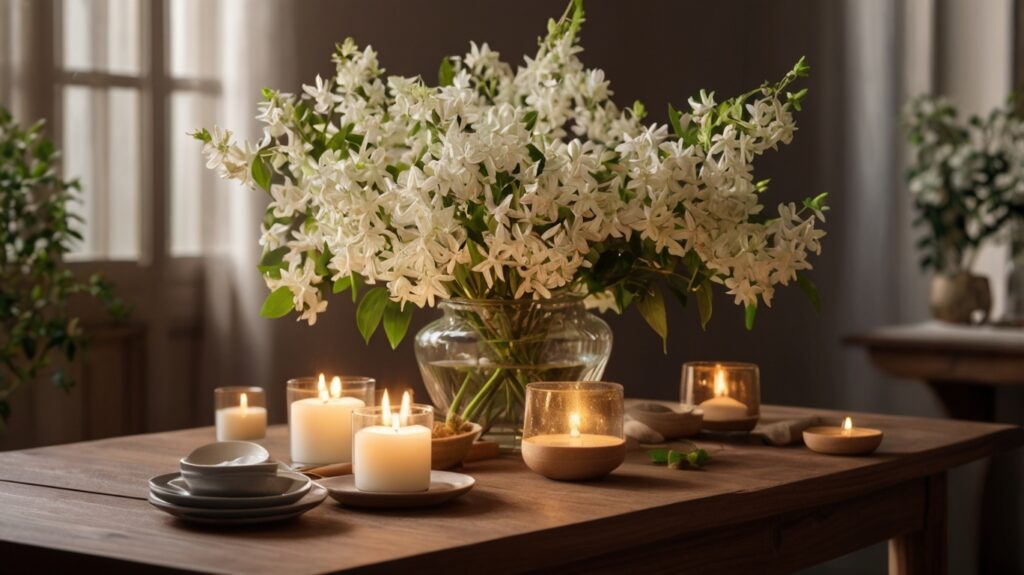
Cultural Significance of Jasmine’s Fragrance Around the World
It’s fragrance holds a rich cultural significance that resonates deeply across various regions and traditions. Its sweet and exotic scent has inspired spiritual, aesthetic, and celebratory practices for centuries, often intertwining with religion, art, and daily life.
Asia: Symbol of Purity and Spirituality
In many Asian countries, it is revered as a symbol of purity and divine blessings. In India, jasmine flowers are integral to Hindu rituals and are frequently used in temple offerings and weddings. The scent is believed to represent love and prosperity, enhancing the ambiance during sacred ceremonies. In Thailand, it is a representation of motherhood, often gifted during Mother’s Day as a token of gratitude and respect. Its calming fragrance is also infused in traditional Thai garlands, offered as blessings or decorative gestures of goodwill.
Middle East: Elegance and Mystique
In the Middle East, jasmine’s aroma carries an air of sophistication and mystique. Its fragrance has long been harnessed in perfumes, embodying opulence and refinement. It’s oil is a key ingredient in many traditional Middle Eastern blends, often combined with other floral and woody notes. The flower’s presence also extends to literature and poetry, symbolizing beauty and eternal love in classical texts.
Europe: Romance and Nostalgia
Across Europe, it is deeply associated with romance and nostalgia. It gained prominence in Victorian gardens, where its intoxicating scent was celebrated as a quintessential part of floral arrangements. In addition to its ornamental role, it has influenced Western perfumery for generations. French perfumers often use of it to craft timeless fragrances that evoke elegance and sophistication. The scent has become synonymous with allure and passionate emotion.
Africa: Medicinal and Aromatic Uses
In parts of Africa, it is valued not only for its fragrance but also for its therapeutic properties. The scent is infused into oils and balms, believed to alleviate stress and fatigue. Its calming aroma plays a role in holistic healing practices, promoting relaxation during periods of physical or emotional strain. In traditional African ceremonies, It is often used to symbolize unity and the continuity of life.
Modern Global Traditions
Across the globe, jasmine’s fragrance continues to captivate various cultures through contemporary practices. It is featured in teas, essential oils, and skincare products, symbolizing tranquility and indulgence. Festivals celebrating flowers often highlight it for its compelling aroma and widespread appeal, bridging cultural divides and uniting people under the allure of its timeless scent.
It’s fragrance transcends geographical boundaries, carrying a cultural legacy that is woven into the fabric of human history.
Uses of Jasmine’s Scent in Perfumes, Oils, and Skincare Products
Jasmine’s enchanting scent is celebrated for its unique mixture of floral sweetness and sensual warmth, making it an indispensable ingredient in the fragrance and beauty industries. The versatility of it allows its delicate aroma to blend seamlessly with various other notes, creating products that captivate the senses.
In perfumes, it is often hailed as a cornerstone ingredient in some of the world’s most luxurious and iconic fragrance formulations. Its heady and romantic scent acts as a middle or heart note, helping to bridge lighter top notes like citrus with deeper base notes such as musk or sandalwood. Both natural it essential oil and synthetic recreations of its aroma are widely used in high-end perfumes to add a touch of sophistication and depth. Its ability to linger on the skin without overpowering ensures its enduring popularity among perfumers.
It’s essential oil plays a key role in aromatherapy and personal care oils. Extracted through steam distillation or solvent extraction, this essential oil is cherished for its calming and mood-boosting properties. When diluted with carrier oils, it serves as a relaxing massage oil or a fragrant addition to hair and body oils, leaving a subtle yet intoxicating scent.
In skincare, jasmine’s scent is coupled with its natural benefits. It is used in creams, serums, and facial oils to enhance relaxation while nourishing the skin. Known for its soothing and hydrating properties, jasmine-infused skincare products are particularly beneficial for sensitive or dry skin types, adding an indulgent sensory experience to routine care rituals.
How Jasmine’s Aroma Affects Mood and Emotions
The aroma of it has long been associated with influencing mood and emotional well-being due to its unique combination of rich, sweet, and exotic floral notes. Its scent contains a range of volatile oils and chemical compounds, such as linalool and indole, which interact with the brain’s limbic system, an area deeply tied to emotions and memory. As a result, it’s fragrance is more than just pleasing to the senses—it can have profound psychological effects.
Studies have shown that it’s aroma often evokes feelings of calm and relaxation, making it helpful in reducing stress and anxiety. In aromatherapy, it essential oil is frequently used to promote a sense of tranquility and emotional balance. Its calming properties make it a popular choice for individuals dealing with mood imbalances or chronic emotional strain. For those who experience insomnia, either due to restlessness or anxious thoughts, the aroma of jasmine has been noted to encourage a sense of peace conducive to better sleep.
Interestingly, the scent of jasmine does not only calm but can also invigorate. Research suggests it has a dual effect: while it soothes the nervous system, it can simultaneously heighten alertness and improve focus. It is believed that this balancing effect allows individuals to feel both relaxed and mentally sharp.
Moreover, it has been linked to boosting feelings of happiness and confidence. Many cultures have regarded its scent as an aphrodisiac, fostering emotional intimacy and increasing feelings of attraction. The combination of its uplifting properties and calming effects makes it a versatile tool for emotional well-being.
Pairing Jasmine’s Scent With Other Fragrances for Captivating Blends
it’s fragrance is celebrated for its intoxicating sweetness, exotic richness, and sensual allure. As a cornerstone in the world of perfumery, its multifaceted profile pairs seamlessly with a variety of other scent notes, creating mesmerizing combinations suitable for diverse moods and occasions. By accentuating or balancing jasmine’s unique qualities, master perfumers craft captivating blends that appeal universally.
1. Citrus Notes for Freshness
Jasmine’s potent floral aroma often benefits from the crispness of citrus notes, such as bergamot, lemon, and grapefruit. These zesty tones lighten the complexity of jasmine, making it suitable for invigorating daytime fragrances or summer-inspired blends. The vibrant tang of citrus provides a clean contrast to jasmine’s lush sweetness.
2. Woody Undertones for Depth
Paired with sandalwood, cedarwood, or patchouli, jasmine exudes a grounded warmth. These woody bases temper jasmine’s softness while evoking an earthy, sensual vibe. Such combinations are often associated with evening perfumes, providing an air of sophistication and mystery.
3. Spices for Exotic Charm
Fragrances featuring cardamom, cinnamon, or cloves alongside jasmine lean into its exotic persona. These aromatic spices enhance jasmine’s opulent character, crafting a bold yet refined composition preferred for colder seasons or intimate gatherings.
4. Green and Herbal Scents for Earthiness
Incorporating green notes like vetiver or herbal touches such as basil and rosemary allows jasmine’s natural, garden-inspired side to shine. These blends evoke springtime freshness, creating an aroma that feels rejuvenating and calming.
5. Sweet Gourmand Accents
Vanilla, honey, or caramel can amplify jasmine’s already sweet profile, leaning toward a more indulgent fragrance. These gourmand elements add a comforting, almost edible richness that appeals to those seeking warmth and sweetness in a blend.
Each pairing creates a signature balance, showcasing jasmine’s unparalleled versatility in perfumery. Properly tailored, it adapts seamlessly to fresh, seductive, or comforting compositions.
Tips for Growing Jasmine in Your Garden and Enhancing its Smell
To cultivate fragrant jasmine successfully, gardeners must focus on key factors such as location, care, and timing. By understanding how to support its growth and enhance its natural scent, anyone can enjoy the captivating aroma of this beloved flower.
Choosing the Right Location
Jasmine thrives in warm, sunny environments. It requires at least 4-6 hours of direct sunlight daily to grow strong and aromatic. Placing the plant near patios, windows, or pathways ensures its compelling fragrance permeates surrounding areas. Additionally, proper airflow is essential, as it helps prevent fungal infections and encourages healthy blooms.
Planting and Soil Preparation
Jasmine grows best in well-drained, fertile soil with a slightly acidic to neutral pH level (between 6.0 and 7.5). Amending the soil with organic compost ensures it retains enough moisture without becoming waterlogged. For regions with heavy clay soil, incorporating sand and organic matter can improve drainage.
Watering and Fertilizing
Consistent but balanced watering is vital. Overwatering leads to root rot, while underwatering can stunt growth. Allow the topsoil to dry slightly between waterings. Fertilize jasmine with a low-nitrogen, high-phosphorus fertilizer during the growing season to boost flower production and enhance fragrance.
Pruning for Growth
Pruning encourages healthier growth and prolific blooming. It is advised to trim jasmine after its flowering season to remove dead or weak branches. This not only maintains the plant’s shape but also maximizes airflow and sunlight exposure.
Enhancing Fragrance
To intensify its natural aroma, plant jasmine near herbs like lavender or mint, which complement its scent. Evening blooming varieties, such as night-blooming jasmine, release their strongest fragrance in the evening, so selecting such species can intensify the sensory experience.
By combining proper care techniques and thoughtful placement, jasmine’s distinctive, sweet fragrance can fill a garden effectively.
Jasmine in Aromatherapy: Health Benefits of Its Enchanting Fragrance
Jasmine has long been revered for its intoxicating fragrance, making it a popular choice in aromatherapy. This delicate floral scent is not just pleasing to the senses but is also widely used for its powerful therapeutic properties. Its application in wellness practices stems from its ability to influence emotional and physical well-being through its aroma.
Emotional and Mental Benefits
Jasmine’s fragrance is often associated with uplifting and calming properties. Studies suggest that the scent of jasmine can help reduce stress and anxiety by promoting a sense of relaxation. It works on the limbic system, the part of the brain responsible for emotions and memories, to enhance mood and combat feelings of depression or fatigue. Often employed in meditation sessions, the aroma encourages mindfulness and tranquility, helping individuals focus better and improve mental clarity.
Physical Health Benefits
The benefits of jasmine in aromatherapy extend to physical health as well. It is believed to stimulate the immune system, enabling the body to fend off certain illnesses. The fragrance also has aphrodisiac qualities, making it a popular choice for enhancing intimacy and connection in relationships. Additionally, its aroma may assist in relieving symptoms of insomnia by creating a restful environment conducive to sleep. Applied through diffusers or massage oils, its calming effect helps the body unwind after a busy day.
How Jasmine is Used in Aromatherapy
Jasmine essential oil is typically extracted through a delicate process called solvent extraction or enfleurage, ensuring the preservation of its complex aromatic compounds. Practitioners utilize this oil by adding it to diffusers, diluting it in carrier oils for massages, or incorporating it into their baths. The versatility of jasmine allows it to blend well with other essential oils such as lavender, sandalwood, and bergamot to amplify its therapeutic effects.
By harnessing jasmine’s enchanting fragrance in aromatherapy, individuals can access a natural solution to enhance relaxation, improve mood, and support overall wellness.
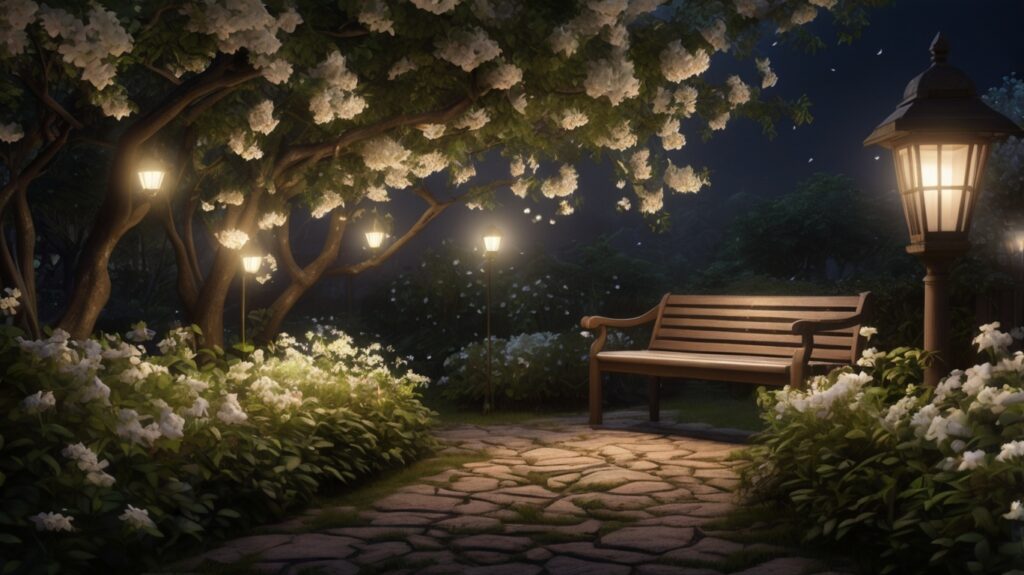
Conclusion: The Timeless Allure of Jasmine’s Delicate Perfume
Jasmine’s fragrance is celebrated across cultures and ages for its captivating charm and multifaceted essence. Known for its sweet, floral aroma with rich, exotic undertones, jasmine carries a distinctive ability to evoke emotions, memories, and even sensations of tranquility. It is often described as a complex blend of freshness, sensuality, and warmth, making it a highly sought-after scent in perfumery, aromatherapy, and ceremonial traditions.
The flower’s scent is influenced by environmental factors, including the variety of jasmine and the time of harvest. For example, certain jasmine species exhibit honey-like notes while others may lean towards fruity or powdery characteristics. Remarkably, its fragrance deepens during nightfall, earning jasmine the title of “moonlight flower.” This nocturnal blooming enhances its notoriety for seduction and mystery, qualities often celebrated in art, literature, and spiritual practices.
Jasmine’s aroma has historically been associated with relaxation and mood enhancement. Studies have shown that its scent can reduce stress, support emotional well-being, and even improve sleep quality. These characteristics contribute to jasmine’s inclusion in therapeutic oils, incense, and wellness rituals worldwide. Moreover, its role in perfumery is unparalleled; jasmine serves as a cornerstone for crafting both light, airy fragrances and deep, provocative blends.
The flower’s cultural significance further underscores its appeal. It symbolizes purity, love, and elegance. Its use in weddings, religious ceremonies, and festivals reinforces its status as a timeless icon. From the bustling streets of Indian festivals adorned with jasmine garlands to the elegant notes of fine French perfumes, jasmine’s global resonance continues unabated.
Its universal charm reflects humanity’s deep connection to nature’s beauty and sensory delights, ensuring jasmine’s delicate perfume remains a timeless treasure for generations. This enduring allure demonstrates how scents can transcend mere olfactory sensations to influence emotions, traditions, and daily living across cultures.

